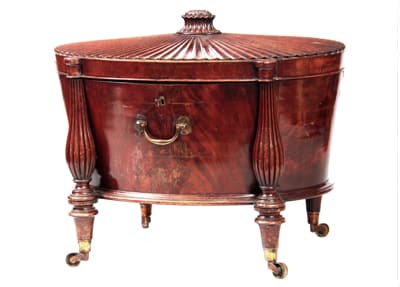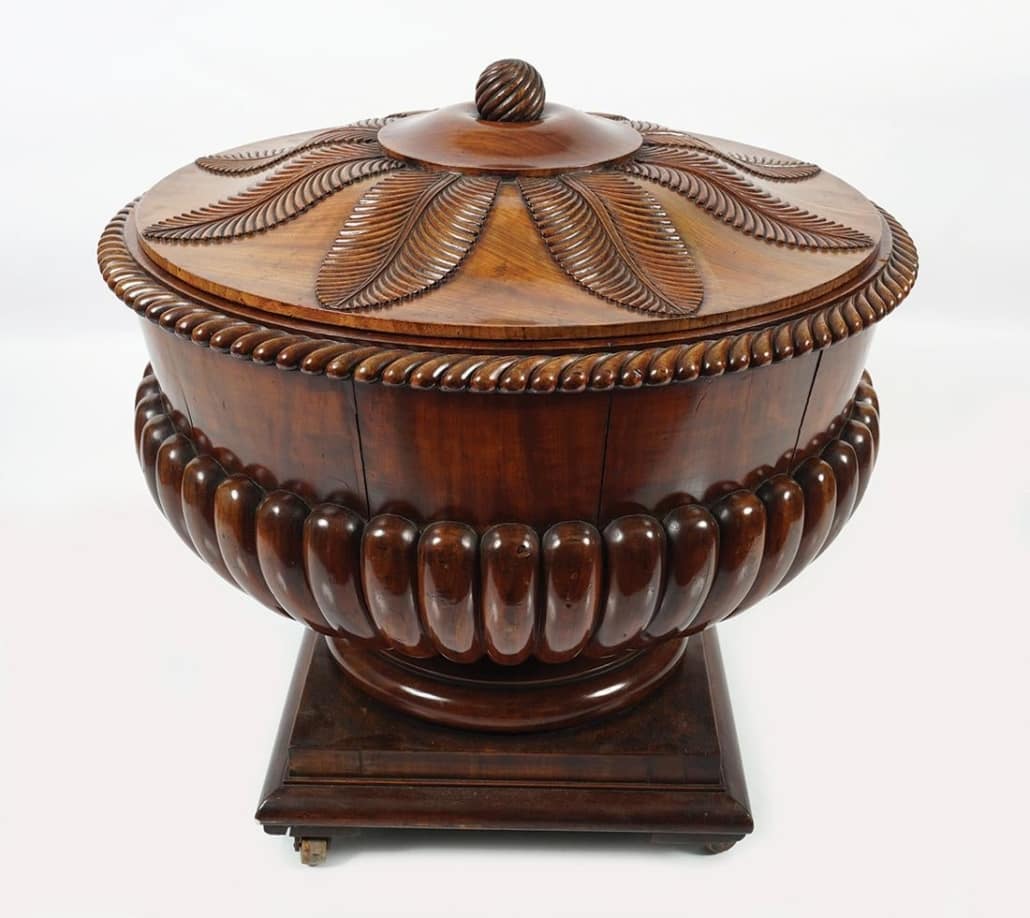
NEW YORK – During the 18th century, as the middle class grew affluent, fine dining became a matter of pride and the formal dining room took on greater importance. Wine was an integral part of the entertaining experience and oenophiles then, and today, used cellarettes or wine coolers to keep their wine at the right serving temperature. Beautifully decorated, these elegant objects were usually made of mahogany with sumptuous carving and lined with zinc or lead.
There is some degree of difference between a wine cooler and a cellarette but for the sake of brevity, we’ll use these terms interchangeably. Basically, wine coolers had an open form whereas cellarettes were generally lidded, though there were wine coolers with lids. Some cellarettes came outfitted with a lock and key to protect their contents from theft – or during the Prohibition era – to hide the illegal spirits.
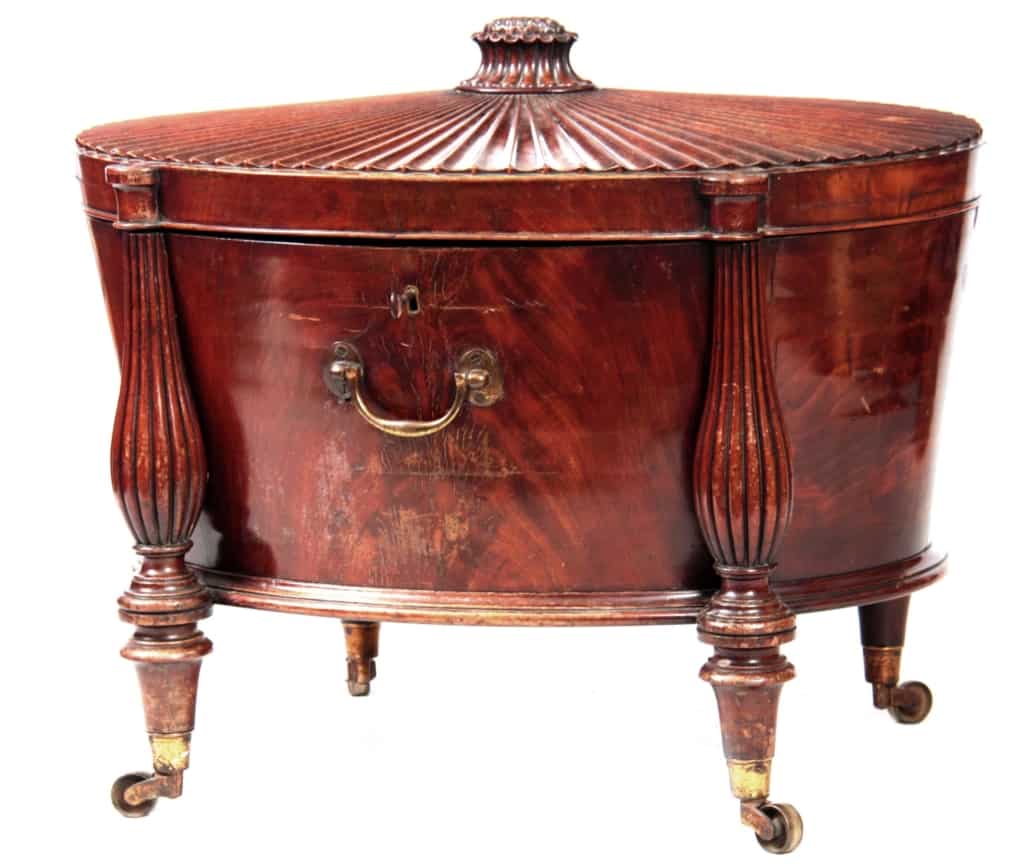
The wine cooler was a key piece of furniture in the 18th and 19th centuries. “The wine would have been placed into the antique cellarette directly from the cellar and this would keep it cool during the evening meal as wine was preferred to be consumed chilled,” according to Antiques World. Created to be a functional and elegant piece of furniture, wine coolers allowed gracious hosts to serve a variety of alcohol from the parlor or dining room.
Prevalent among makers in the United Kingdom, wine coolers were made in a variety of styles from George III and George IV to Regency, Georgian and Hepplewhite. Georgian period examples were among the most popular. By the Victorian era, the popularity of the cellarette faded when sideboards were outfitted with lead-lined drawers where bottles could be stored instead. Later, refrigerators replaced the need for them altogether. Desirable American cellarettes were mostly made in the Newport, R.I., cabinetry style.
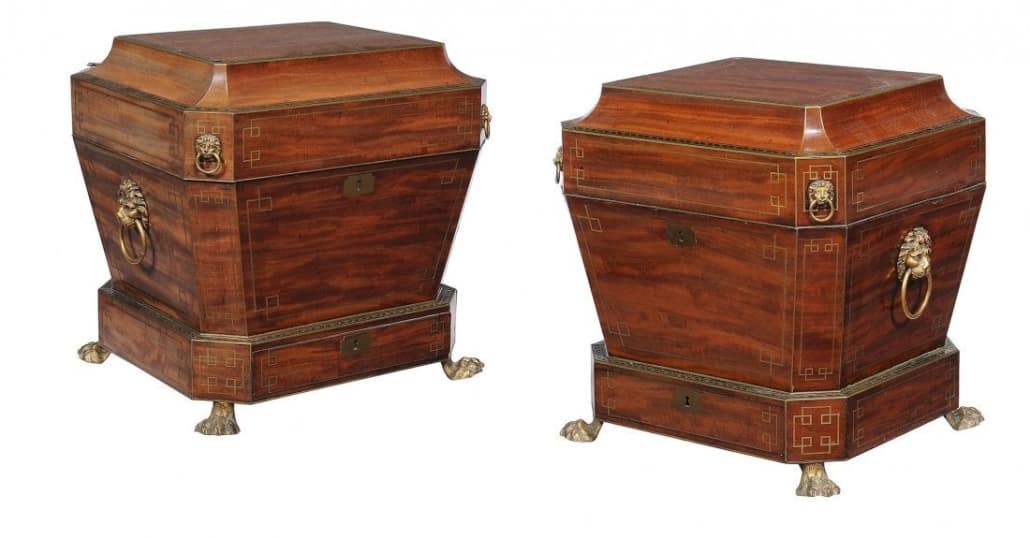
It is rare to find Georgian period wine coolers still with their original stands and many have lost their original lead liner. A zinc tray would be a suitable liner replacement as the cooler can still keep wine chilled. Some examples had separate bottle sections in order to store several kinds of spirits.
“Throughout the 19th century, wine coolers continued to remain popular, with the new habit of drinking red wine at room temperature giving rise to the production of cellarets without covers,” according to Patrick Sandberg Antiques.

Wine coolers were often made in mahogany, sometimes oak, and usually custom-made. Flame mahogany examples and light-colored mahogany are particularly prized. Wine and liquor bottles were shorter than they are today so over time, wine coolers became deeper to accommodate taller bottles. They came in several shapes, including circular, oval, rectangular, octagonal, sarcophagus-form, or bombe, and often set on legs. By the late 19th century, however, legs were short, if there were any. They usually have brass striping around the sides or were brass-mounted. More ornate ones featured shelves or trays to store glasses, punch bowls and the like. Some had a center drain when ice was used.
Depending on the height and if they had legs, the wine cooler was traditionally kept on top of – or under – the sideboard. As decorating styles changed, so did the wine cooler, which was made to match or complement, one’s dining furniture. Legs got thinner or thicker and feet could be paw feet or claw feet.
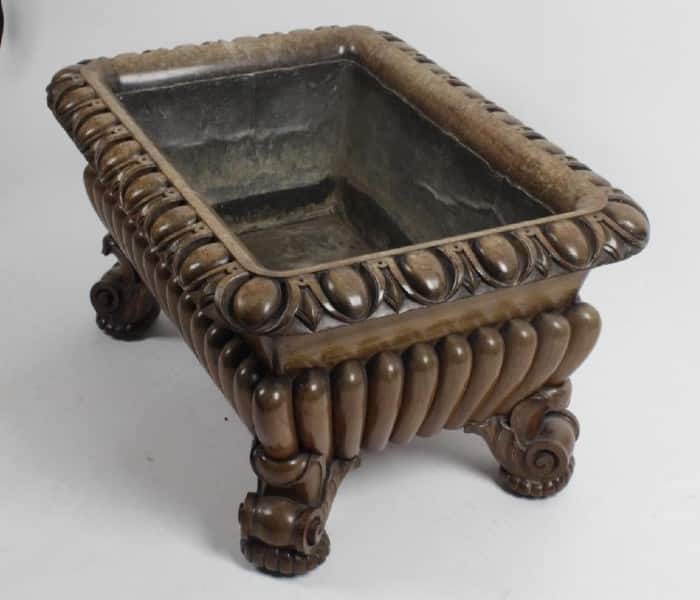
Decoration was usually ornate as the craftsmen making these pieces wanted to show off their workmanship. Sought-after elements include acanthus leaf carved lids, handles, elegant finials, gadrooning and reeded bodies. This circa 1815 pair of Regency mahogany and brass inlaid wine coolers, which made £7,000 + the buyer’s premium in November 2016 at Dreweatts Donnington Priory, was crafted in the manner of George Oakley. Each has a cavetto molded lid above tapering bodies, fine brass marquetry and bearing a lion mask ring handle on each side. These coolers were set on hairy lion paw feet on plinths. Hepplewhite examples often had more generous proportions such as this oval cellarette/wine cooler having a slightly elevated fan fluted top with a carved and fluted pineapple finial.
Today, elegant antique cellarettes or wine coolers are making a comeback as a bold statement in living rooms, dining rooms and home bars.
# # #


